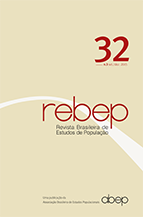Population distribution and land cover: the protected areas in Pará, Brazil in 2010
Keywords:
Pará, Protected areas, Spatial distribution, Statistical grid, Land use and land coverAbstract
The objective of this study is to analyze population distribution in the state of Pará in Brazil using data from the2010 Population Census in association with the land use and land cover data from TerraClass arranged in a statistical grid. The role of 113 Protected Areas (including 46 Indigenous Lands, 51 Sustainable Use Conservation Units and 16 Integral Protection Conservation Units) is analyzed from the standpoint of their demographic rural-urban gradients and in terms of their land use cover. Information on the use and cover of land in Protected Areas along with census data were incorporated into a statistical grid using GIS. The spatial relationship of information layers in the cells indicates that the state’s population is highly concentrated in a few areas, a pattern that is reproduced to some extent in the Protected Areas (Gini coefficient for the distribution of households is higher than 0.9). The area of the Protected areas is less populated and retains a greater extension of forested areas, by comparison to the state. Despite having extensive segments devoid of occupied households and the largest expanse of forest coverage (57%) in the state, Protected Areas also have urban areas associated with other uses and land cover change. The results indicate that population dynamics and changes in the uses and covering of land are related in a broader manner, thereby suggesting the need for reflection on urbanization and changes in land use and land cover change within a more integrated approach.
DOI http://dx.doi.org/10.1590/S0102-3098201500000032
Downloads
Downloads
Published
How to Cite
Issue
Section
License
Papers published in Rebep are original and protected under the Creative Commons attribution-type license (CC-BY). This license allows you to reuse publications in whole or in part for any purpose, free of charge, even for commercial purposes. Any person or institution can copy, distribute or reuse the content, as long as the author and the original source are properly mentioned.

